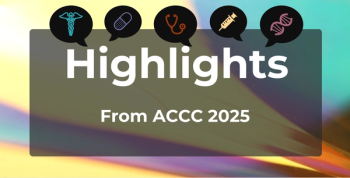
Dr Aimee Tharaldson: We're Keeping an Eye on Future NASH Treatments
The first drugs for nonalcoholic steatohepatitis (NASH) won't be approved until 2019 at the earliest, but with 16 million Americans affected and another 6 million to 10 million at high risk, the market could be expensive and it's worth keeping an eye on, said Aimee Tharaldson, PharmD, senior clinical consultant for emerging therapeutics at Express Scripts.
The first drugs for nonalcoholic steatohepatitis (NASH) won't be approved until 2019 at the earliest, but with 16 million Americans affected and another 6 million to 10 million at high risk, the market could be expensive and it's worth keeping an eye on, said Aimee Tharaldson, PharmD, senior clinical consultant for emerging therapeutics at Express Scripts.
Transcript
What is the potential budget impact that treatments for nonalcoholic steatohepatitis could have in the future?
So NASH, nonalcoholic steatohepatitis, this is a condition that affects as many as 16 million Americans and even 6 to 10 million Americans have high risk NASH. So it's a leading cause of new liver transplants in the United States. About 40% of patients with NASH go on to develop cirrhosis. Right now the primary treatment options are really just lifestyle modification: eating better, diet, exercise, that type of thing. But there are several manufacturers developing drugs to treat NASH.
Right now it can only be diagnosed with a liver biopsy, so some manufacturers are developing tests that are plasma tests so they can identify these patients just using a plasma test. Treatment for NASH will likely be a combination of a lot of different medications—maybe 2, maybe 3 depending on how well they're tolerated. But right now there's about, I don't know, 15 or more different mechanisms to try to treat NASH. So it's really interesting, there's a lot of focus on this area.
Since it's a huge patient population, some analysts suspect this could be a $35 billion per year market. So that's why we're keeping an eye on it. The first drugs will likely not be approved until 2019 at the earliest.
Newsletter
Stay ahead of policy, cost, and value—subscribe to AJMC for expert insights at the intersection of clinical care and health economics.









































